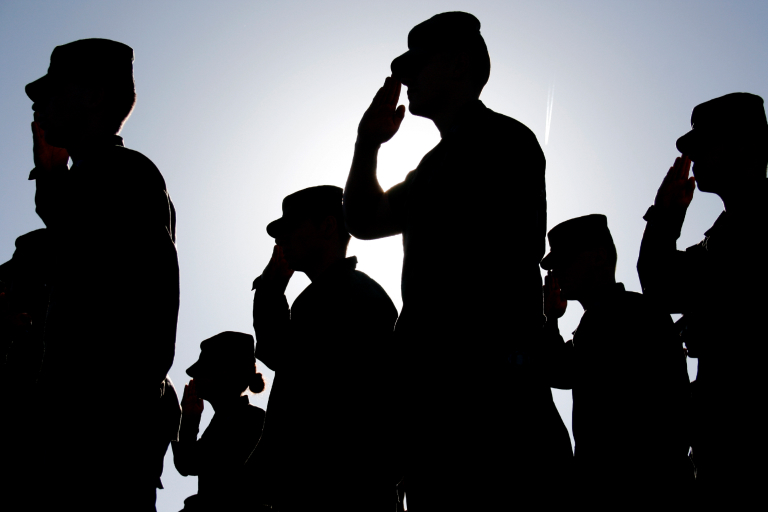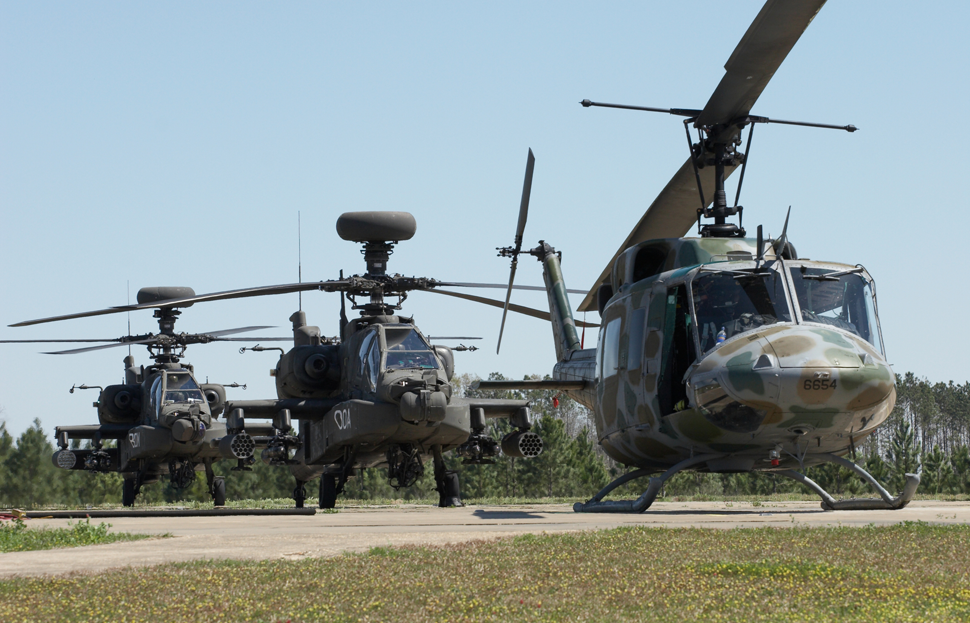Get A Free Legal Consultation
- We fight to maximize your results
- Many clients get results in as few as 90 days
- No out-of-pocket costs for you or your family






The U.S. Army began using asbestos-containing products and building materials in the 1930s. This toxic mineral could be found throughout barracks, mess halls, hospitals and other buildings where soldiers slept, worked and ate.
There is no safe level of asbestos exposure. Decades later, U.S. Army veterans remain at risk of developing mesothelioma and other asbestos-related diseases.
As a mesothelioma law firm founded by a U.S. Army veteran, Simmons Hanly Conroy is proud to work with veterans to secure justice. Call (800) 326-8900 now to see if you qualify for compensation.
Asbestos is a naturally occurring mineral known for its strength and heat-resistant properties. Because of this, it was abundantly used by the military as insulation, throughout construction projects and in vehicle maintenance.
When asbestos fibers are disturbed, they can become airborne. Inhaling or ingesting these microscopic fibers causes them to get stuck inside the body, which can lead to mesothelioma and other asbestos-related diseases.
By the late 1970s, the U.S. Army stopped using asbestos in new projects. However, asbestos remained in older buildings and equipment for years to come.
Since asbestos-related diseases can take 10-50 years to develop, many veterans remain at risk of mesothelioma and other serious illnesses.
If you or a loved one was diagnosed with mesothelioma, negligent asbestos companies may be to blame. As a national mesothelioma law firm, Simmons Hanly Conroy has the resources to help you figure out where and how you were exposed to asbestos.
Call (800) 326-8900 or fill out our consultation form today to learn more.
Every branch of the military used asbestos throughout its bases, and the U.S. Army was no exception. Our U.S. Army veteran clients with mesothelioma and other asbestos-related diseases have been stationed at bases across the country.
These have included:
Unfortunately, some military occupations may have required veterans to work closely with asbestos due to the nature of their jobs.
U.S. Army jobs at high risk of asbestos exposure include:
During their service time, U.S. Army veterans also often worked around various tradesmen, including boilermakers and pipefitters, who used asbestos materials while making repairs to various heat-related machinery and heavy duty equipment on military bases.
Simmons Hanly Conroy has represented over 3,000 veterans, in addition to civilian contractors and workers who were employed at U.S. Army bases both nationally and internationally.




U.S. Army mechanics who worked on jeeps, trucks, motorcycles and troop transports have an increased risk for asbestos exposure. The same is the case for U.S. Army aviation mechanics who worked on helicopters and other aircraft.
These mechanics may have been exposed to asbestos-containing brakes, clutches, gaskets, adhesives and other asbestos-containing products while performing maintenance and repairs on these types of equipment.
Mesothelioma is an aggressive cancer that often requires hundreds of thousands of dollars in medical expenses and treatment.
With the help of an experienced mesothelioma lawyer, you may be able to secure compensation to help pay for treatment and other costs.
Mesothelioma compensation can be used to cover a variety of expenses, including:
As a U.S. Army veteran diagnosed with mesothelioma or another asbestos-related disease, you may have the following options available to you to help cover your financial needs.
Our team has recovered more than $9.3 billion on behalf of our clients with mesothelioma. We may be able to help you access justice and financial compensation too.
Your asbestos attorney can help you determine your eligibility for each of these options.
The U.S. Department of Veterans Affairs (VA) is responsible for managing the VA financial benefits and VA health care benefits for all U.S. Army and service members.
To qualify for benefits, veterans with mesothelioma have to prove they were:
Your mesothelioma attorneys can help you prepare your VA claims. Outside of VA benefits, U.S. Army veterans with mesothelioma may also be entitled to legal compensation.


Many asbestos companies were aware of the fact that asbestos could cause people to develop deadly illnesses — but they hid this information to protect their profits.
A mesothelioma lawsuit may allow you to hold these companies accountable for their actions while seeking compensation to pay for medical bills, travel costs and other expenses.
You won’t be suing the U.S. Army or any other branch of the U.S. military.
As asbestos companies began to file for bankruptcy in an effort to avoid mesothelioma lawsuits, the U.S. court system mandated that these companies put money into trust funds to pay victims with asbestos-related diseases.
Today, there is an estimated $30 billion remaining in asbestos trust funds.
You may be able to access compensation from multiple trust funds with the help of our mesothelioma attorneys, without ever having to go to court.
– John Simmons, U.S. Army Veteran & Firm Founder
Simmons Hanly Conroy is dedicated to working with veterans who have become sick as a result of asbestos exposure.
Our mesothelioma lawyers will work to secure compensation on your behalf — at no out-of-pocket cost to you or your family. We strive to maximize the amount of compensation that you receive.
Past mesothelioma settlements and verdicts for U.S. Army veterans have included:
![]()
![]()
![]()
![]()
U.S. Army Veteran &
Maintenance Worker
![]()
![]()
![]()
![]()
U.S. Army Veteran &
Boilermaker
![]()
![]()
![]()
![]()
U.S. Army Veteran &
Painter
The U.S. Army mesothelioma lawyers at Simmons Hanly Conroy are well equipped to help veterans like you pursue legal compensation and prepare your VA claims.
Our legal team can:
Simmons Hanly Conroy never files mesothelioma claims against the U.S. Army or other military branches. Our attorneys work to make the legal process as stress-free as possible for you and your family.
If you served in the U.S. Army and later developed mesothelioma, you may be entitled to compensation from legal claims, VA benefits and asbestos trust funds.
Contact Simmons Hanly Conroy today for a free legal consultation. Call (800) 326-8900 or fill out our contact form now.
At Simmons Hanly Conroy, we pride ourselves on building meaningful relationships with our clients. But you don’t have to take our word for it — hear what some of our clients have to say about their experience working with our mesothelioma law firm.
Yes. If you were exposed to asbestos during your time in the military, you may be eligible to file a VA claim for health care and financial compensation.
According to the U.S. Department of Veterans Affairs, mesothelioma has a 100% disability rating. As of December 2023, this means that you may be eligible for over $3,700 a month from the VA.
Mesothelioma has a 100% disability rating, which means you may be eligible for over $3,700 a month from the VA.
Asbestos was used across all U.S. military branches before the dangers of this toxic mineral were known to the public. Asbestos was present in the equipment, vehicles and buildings utilized by the U.S. military.
If the asbestos was disturbed and became airborne, veterans may have accidentally inhaled or ingested asbestos fibers. These fibers lodge themselves in the body and may eventually lead to veterans developing mesothelioma.
The military no longer uses asbestos in new construction projects. However, older U.S. Army vehicles, equipment and housing may still contain asbestos.